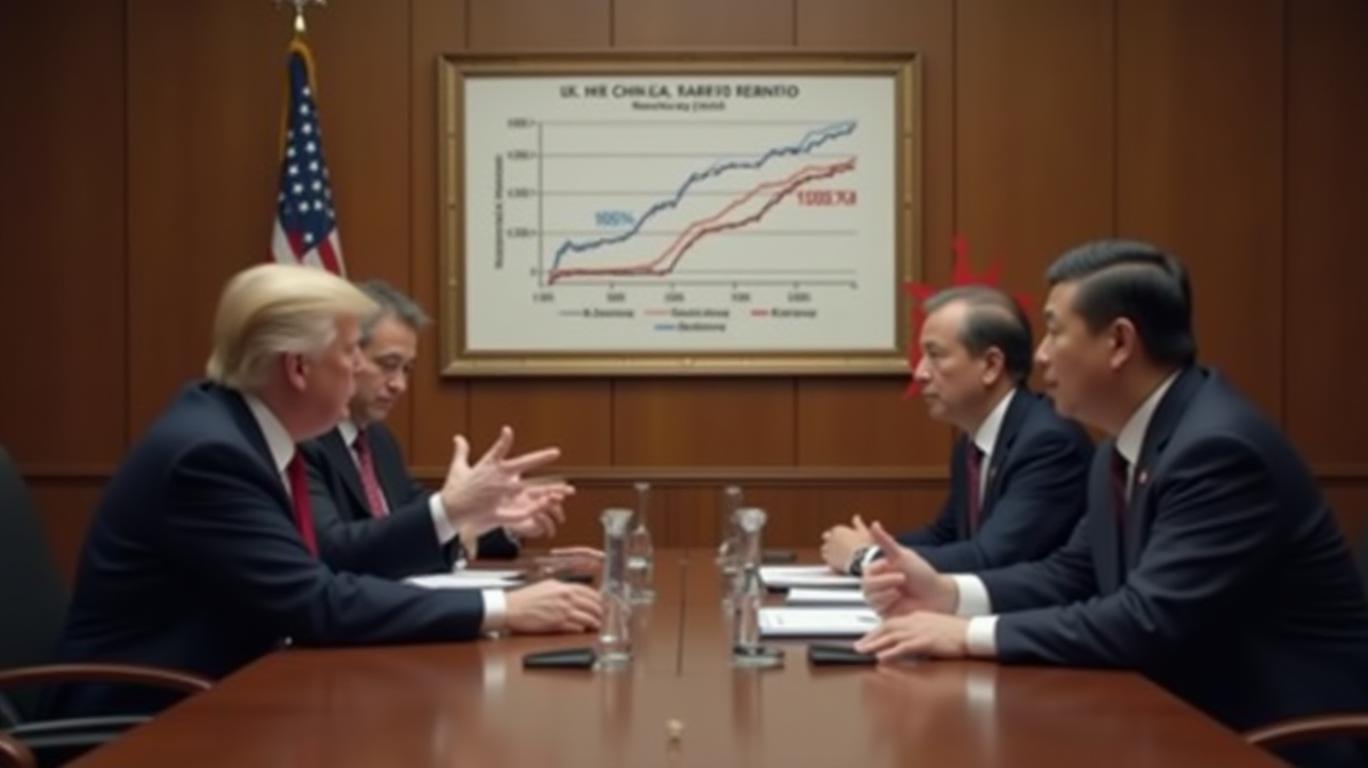Navigating the Tariff Tightrope: Investment Implications of the U.S.-China Trade Talks
The upcoming U.S.-China trade talks in Geneva have thrust the global economy into a high-stakes negotiation, where Donald Trump’s sudden pivot on tariffs—suggesting an 80% rate as a “good number”—has ignited debate among investors. With tariffs currently at a punitive 145%, the proposed reduction represents a tactical shift, but the path to resolution remains fraught with political and economic landmines.
The Tariff Landscape: A Fragile Equilibrium
The current 145% U.S. tariffs on Chinese goods, paired with China’s retaliatory tariffs exceeding 100%, have already inflicted collateral damage. In 2024, U.S. imports from China fell sharply, with automotive components and electronics among the hardest-hit sectors. Meanwhile, U.S. exports to China—though smaller at $143.5 billion versus $438.9 billion in imports—face their own challenges, as Beijing tightens control over market access for American firms.

The 80% proposal, while a concession, retains enough punitive force to pressure Beijing without fully alleviating U.S. consumer pain. However, Treasury Secretary Scott Bessent’s ambiguous stance—“decisions are up to Scott B”—hints at internal administration tensions, leaving markets guessing whether this is a negotiating ploy or a lasting policy.
Sector-Specific Risks and Opportunities
For investors, the stakes are unevenly distributed across industries:
1. Consumer Staples: The existing 145% tariffs have already driven up prices for goods like furniture, toys, and electronics. A drop to 80% could ease inflationary pressures, benefiting retailers such as
Manufacturing and Logistics: Companies reliant on Chinese supply chains—such as Apple (AAPL) or Caterpillar (CAT)—may breathe easier if tariffs ease, but the 80% threshold could still incentivize reshoring or diversifying production to Southeast Asia. Vietnam’s Ho Chi Minh City, for instance, has emerged as a preferred alternative for firms like Intel (INTC).
Tech and Semiconductors: The U.S. semiconductor industry, already strained by export controls on China, faces a double bind. Lower tariffs might encourage Chinese demand, but geopolitical tensions over chip technology (e.g., the CHIPS Act) could offset gains.
Political Dynamics: A Game of Chicken
China’s refusal to “compromise on core principles”—such as tech sovereignty or Taiwan—means any deal hinges on U.S. willingness to accept asymmetric concessions. Trump’s public negotiation tactics, including the 80% “trial balloon,” risk alienating allies. Senate Minority Leader Mitch McConnell’s criticism of tariffs as “bad policy” underscores bipartisan frustration with the administration’s approach.
Meanwhile, Beijing’s retaliation has forced the U.S. to confront its trade deficit dilemma. With Chinese exports to the U.S. down 30% since 2020, American consumers now face the risk of shortages in key sectors. This creates a perverse incentive: lower tariffs may be necessary to stabilize supply chains, even if they fail to address underlying issues like intellectual property theft.
Investment Strategies: Playing the Margins
Investors should adopt a multi-pronged approach:
1. Diversification: Avoid overexposure to single-country risks. The iShares MSCI China ETF (FXI) and iShares MSCI Emerging Markets ETF (EEM) offer broad exposure but carry geopolitical volatility.
Supply Chain Resiliency: Favor companies with diversified manufacturing footprints, such as Nike (NKE), which sources 40% of its footwear outside China.
Alternatives to Tariffs: The U.S.-U.K. trade deal’s 10% baseline tariff—lower than the proposed 80%—hints at a broader strategy to reduce reliance on China. Investors might explore sectors in the U.K. deal, such as automotive (e.g., Ford (F) or Tesla (TSLA)).
Conclusion: A Fragile Truce, Not a Breakthrough
The 80% tariff proposal is best viewed as a temporary tactical adjustment, not a permanent solution. With China’s imports to the U.S. down 30% in two years and domestic inflation rising, the administration faces a stark trade-off: tolerate higher prices to pressure Beijing or accept a weaker negotiating stance.
Key data points underscore the fragility of this balance:
- The 2024 trade deficit ($295.4 billion) highlights China’s indispensable role as a U.S. trade partner.
- A drop to 80% tariffs could salvage $30–40 billion in annual trade volume, but only if Beijing reciprocates.
- U.S. consumer price indices for tariff-affected goods rose 7% in 2024—evidence of the cost burden.
For investors, the priority is to avoid binary bets on a “deal or no deal” outcome. Instead, focus on companies and sectors that thrive in ambiguity—those with flexible supply chains, exposure to multiple trade agreements, or pricing power to offset tariff-driven costs. The road to Geneva offers no clear resolution, but vigilance and diversification can turn volatility into opportunity.

Comments
No comments yet